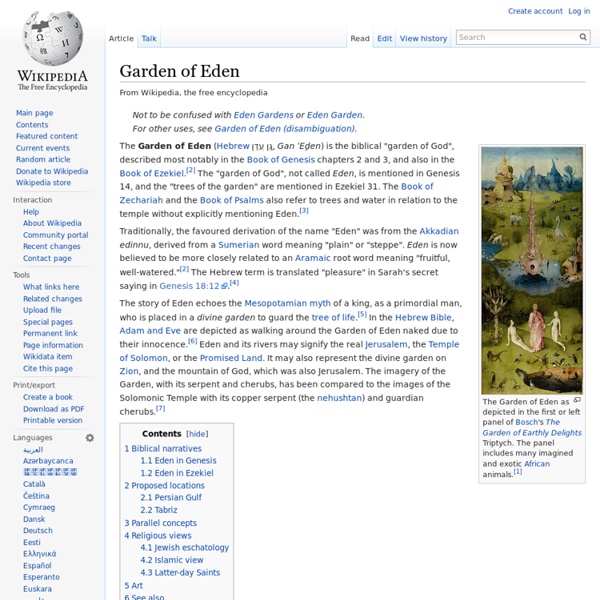Thoth
Thoth (; from Koinē Greek: Θώθ thṓth, borrowed from Coptic: Ⲑⲱⲟⲩⲧ, the reflex of Ancient Egyptian: ḏḥwtj "[He] is like the Ibis") is one of the ancient Egyptian deities. In art, he was often depicted as a man with the head of an ibis or a baboon, animals sacred to him. His feminine counterpart was Seshat, and his wife was Ma'at.[1] He was the god of wisdom, writing, hieroglyphs, science, magic, art, judgment, and the dead. Thoth's chief temple was located in the city of Hermopolis (Ancient Egyptian: ḫmnw /χaˈmaːnaw/, Egyptological pronunciation: "Khemenu", Coptic: Ϣⲙⲟⲩⲛ Shmun). Later known as el-Ashmunein in Egyptian Arabic, it was partially destroyed in 1826.[2]
Top Tips For Reducing Inflammation In The Body
Most health experts now agree that inflammation is the root cause behind most all chronic illnesses and disease. While there are a variety of causes for chronic inflammation in the body, the outcome is always the same. Over time and left unchecked it leads to premature aging and diminished health.
Ammit
Ammit (; Ancient Egyptian: ꜥm-mwt, "devourer of the dead";[1] also rendered Ammut or Ahemait) was a demoness and goddess in ancient Egyptian religion with a body that was part lion, hippopotamus, and crocodile—the three largest "man-eating" animals known to ancient Egyptians. A funerary deity, her titles included "Devourer of the Dead", "Eater of Hearts", and "Great of Death".[3] Ammit lived near the scales of justice in Duat, the Egyptian underworld. In the Hall of Two Truths, Anubis weighed the heart of a person against the feather of Ma'at, the goddess of truth, which was depicted as an ostrich feather (the feather was often pictured in Ma'at's headdress). If the heart was judged to be not pure, Ammit would devour it, and the person undergoing judgment was not allowed to continue their voyage towards Osiris and immortality. Once Ammit swallowed the heart, the soul was believed to become restless forever; this was called "to die a second time". Influence on popular culture[edit]
wellnessmama
I’ve been meaning to write this post for a long time and finally had the time while the kids are napping and I am (ironically) sipping a Chia Seed Energy Drink (recipe below). If you don’t already use chia seeds, you are missing out! Not only are they gluten/grain free naturally, but one tablespoon of Chia Seeds has more calcium than a glass of milk, more Omega-3s than Salmon, and more antioxidants than blueberries. Perfect? Almost… they do get stuck in your teeth if you chew them plain (ask me how I know that!).
Palermo Stone
Fragment of a stele known as the Royal Annals of the Old Kingdom of Ancient Egypt The Palermo Stone, the fragment of the Egyptian Royal Annals housed in Palermo, Italy. The Palermo Stone is one of seven surviving fragments of a stele known as the Royal Annals of the Old Kingdom of Ancient Egypt.
7 Top Health Benefits of Maca
Maca, a root that belongs to the radish family, is most commonly available in powder form. Grown in the mountains of Peru, it has been called “Peruvian ginseng.” Maca’s benefits have been long valued, and has recently been popularized as a supplement and food ingredient. There are no serious known side effects of maca, but like any other supplement it should not be taken in large amounts. When you first start using maca, it’s best to begin by taking smaller amounts and building up; even 1/2 teaspoon is a good place to start.
Inanna
Ancient Mesopotamian goddess Inanna-Ishtar's most famous myth is the story of her descent into and return from Kur, the ancient Sumerian Underworld, a myth in which she attempts to conquer the domain of her older sister Ereshkigal, the queen of the Underworld, but is instead deemed guilty of hubris by the seven judges of the Underworld and struck dead. Three days later, Ninshubur pleads with all the gods to bring Inanna back, but all of them refuse her except Enki, who sends two sexless beings to rescue Inanna. They escort Inanna out of the Underworld, but the galla, the guardians of the Underworld, drag her husband Dumuzid down to the Underworld as her replacement.
Herewith a complete list of herbal remedies and the ailments or illnesses with which the herbal remedies may be of use.
Some common ailments respond very well to the treatment with herbal remedies, but must not be seen as an replacing conventional medicine. Herewith some ailments, and the corresponding herbal remedies - as infusions - that may be helpful with the particular problem, but when in doubt, please consult your medical practitioner immediately. For more on how to prepare herbal teas and use of specific herbs. Also note that this is just a small reference and that many more herbs could be used for ailments, and the list must not be seen as complete and exhaustive.
Ninsun
Mythology[edit] In the Epic of Gilgamesh, Ninsun is depicted as a human queen who lives in Uruk with her son as king. Since the father of Gilgamesh was former king Lugalbanda, it stands to reason that Ninsun procreated with Lugalbanda to give birth. She assists her son in his adventure by providing him with the meanings of his dream in the beginning. Also in the Epic of Gilgamesh, Ninsun is summoned by Gilgamesh and Enkidu to help pray to the god Utu to help the two on their journey to the Country of the Living to battle Humbaba.
Detailed Listing of Acid / Alkaline Forming Foods
The pH scale is from 0 - 14 Human blood pH should be slightly alkaline ( 7.35 - 7.45 ). Below or above this range means symptoms and disease. A pH of 7.0 is neutral.
Humbaba
A monstrous giant of immemorial age raised by Utu, the Sun Terracotta plaque of Humbaba from the Louvre Description[edit] His face is that of a lion.



